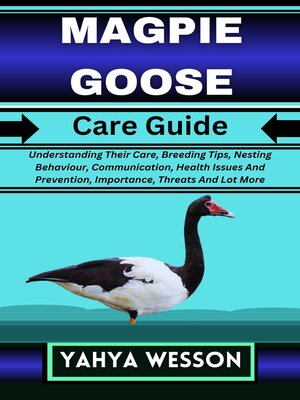MAGPIE GOOSE Care Guide
ebook ∣ Understanding Their Care, Breeding Tips, Nesting Behaviour, Communication, Health Issues And Prevention, Importance, Threats And Lot More
By Yahya Wesson

Sign up to save your library
With an OverDrive account, you can save your favorite libraries for at-a-glance information about availability. Find out more about OverDrive accounts.
Find this title in Libby, the library reading app by OverDrive.



Search for a digital library with this title
Title found at these libraries:
| Library Name | Distance |
|---|---|
| Loading... |
The Magpie Goose, also known as Anseranas semipalmata, is a fascinating bird species found in northern Australia's wetlands. They are medium-sized waterbirds with unique black and white plumage and a big black knob on the top of their heads. They are the sole surviving species in the genus Anseranas and are regarded a living fossil with a 60 million-year ancestry.
These birds are critical to the survival of Australia's sensitive wetlands ecosystem. They graze on a range of aquatic plants, which helps to regulate their growth and preserve the wetlands' equilibrium. They are also important in the distribution of seeds and nutrients that are required for the growth of other plant species in the region.
Furthermore, the Magpie Goose is extremely important to the land's traditional owners. These birds have a profound cultural and spiritual link with Indigenous Australians, and they play an important role in their traditional traditions and legends. They also provide food for indigenous populations that have a thorough awareness of the birds' behavior and role in the ecology.
Unfortunately, due to habitat destruction, poaching, and other human activities, the Magpie Goose population has been diminishing. Conservation initiatives are underway to save their environment and expand their population. Because these birds are critical to the delicate balance of the wetlands and have cultural significance, it is critical to increase awareness about their protection and secure their existence for future generations.







